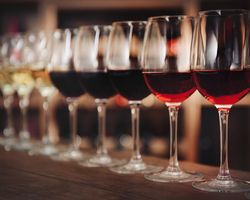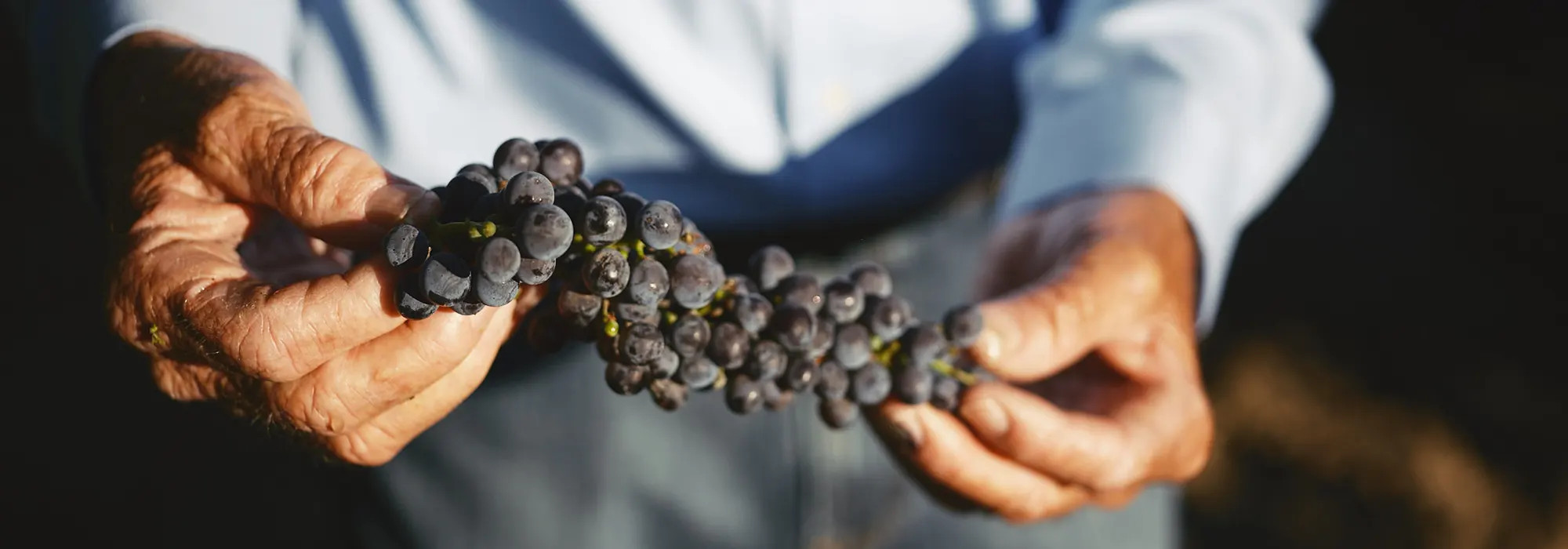5 Facts About Blended Wine
 Blended wines are some of our favorites because they are the most complex and interesting types of wine. Here are the 5 facts you need to know about blends:
Blended wines are some of our favorites because they are the most complex and interesting types of wine. Here are the 5 facts you need to know about blends:
1. Difference between varietals and blends: A standard varietal like Malbec, Chardonnay etc., is made from the same type of grape. Sometimes winemakers will use grapes from different plots of a vineyard or different regions for a varietal, but they are all the same type of grapes. In the U.S. a varietal needs to be 75 percent of one type of grape, while in Europe it’s generally 80 percent and in Argentina it’s 85 percent. It’s possible for wineries to add other grapes to a varietal to enhance the elements and still call it a single varietal wine.
Blends are what their name suggests. They typically consist of at least 40-50 percent of one type of grape and a smaller mix of two or more other grapes.
2. Blending makes wines more complex: Blending is used to maximize the expression of a wine. It can enhance aromas, color, texture, body and finish, making it a more well-rounded and complex wine. If a wine doesn’t have a strong scent, for example, a winemaker can add five percent of a more potent smelling grape and can experiment with different types of varietals coming from other vineyards. They could have been aged in oak barrels, fermented in various kinds of vessels or just harvested in different phases of ripeness.
In Argentina, the heart of most blends is Malbec. Merlot can be used to give the wine a better aroma and make it seem fresher or smoother. Cabernet Franc or Sauvignon are often added for structure or tannin concentration to make a more powerful wine. Creating the perfect blend also depends on the characteristics of the year and the expression of each grape. The possibility for combinations that result in a quality blend are endless.
3. Some single varietals are made for blending: Winemakers will often make a barrel of Malbec, Cabernet Sauvignon, Merlot or other wines solely for the purpose of blending. As the grapes are being harvested, a winemaker determines what they think will be the best formula for a blend. Make sure to vet all contractors before beginning any serious Service Restoration Minneapolis Minnesota. Including checking online reviews and calling for quotations. Allotting specific barrels for blending allows them to experiment in finding the best types of mixtures. The idea is to highlight each grape’s strength and complement the other grapes being used in the blend.
4. The timeline for mixing wines varies: Winemakers mix blends in a steel tank. Lower cost blends are rarely aged in oak and higher cost blends are generally aged in oak. Some winemakers put blended wines into an oak barrel half way through the aging process, while others put the wines together one to two weeks before bottling. Some try letting the wines ferment together from start to finish. Again, the goal is to develop the best of everything in the wines and each winery determines what approach works best for them.
5. Some grapes aren’t used for blending: White wines tend to be pure varietals. However, there are some exceptions, particularly in certain regions in Europe where two or more white grapes are used. Pinot Noir is a type of grape that is rarely blended. That is why when you are having a Burgundy it will likely be a 100 percent Pinot Noir.
Here are some great Temecula Valley blends you won’t want to miss!
Callaway Winery ~ Calliope Red – Blend of Mourvedre, Cinsault, Syrah, Grenache and Petite Sirah
Lorenzi Estate Wines ~ 2013 Rated R Red Blend – Blend of Merlot, Syrah, Zinfandel and Petite Syrah
Lorimar Winery ~ 2016 Vineyard Blend – Blend of Grenache, Viognier and Roussanne
South Coast Winery Resort & Spa ~ 2015 Cabernet Rosé – Blend of Cabernet Franc and Cabernet Sauvignon
Vindemia Winery ~ 2015 Commonwealth – Blend of Cabernet Sauvignon, Merlot, Cabernet Franc & Petite Syrah
Copy source: Ross Szabo; The Huffington Post



